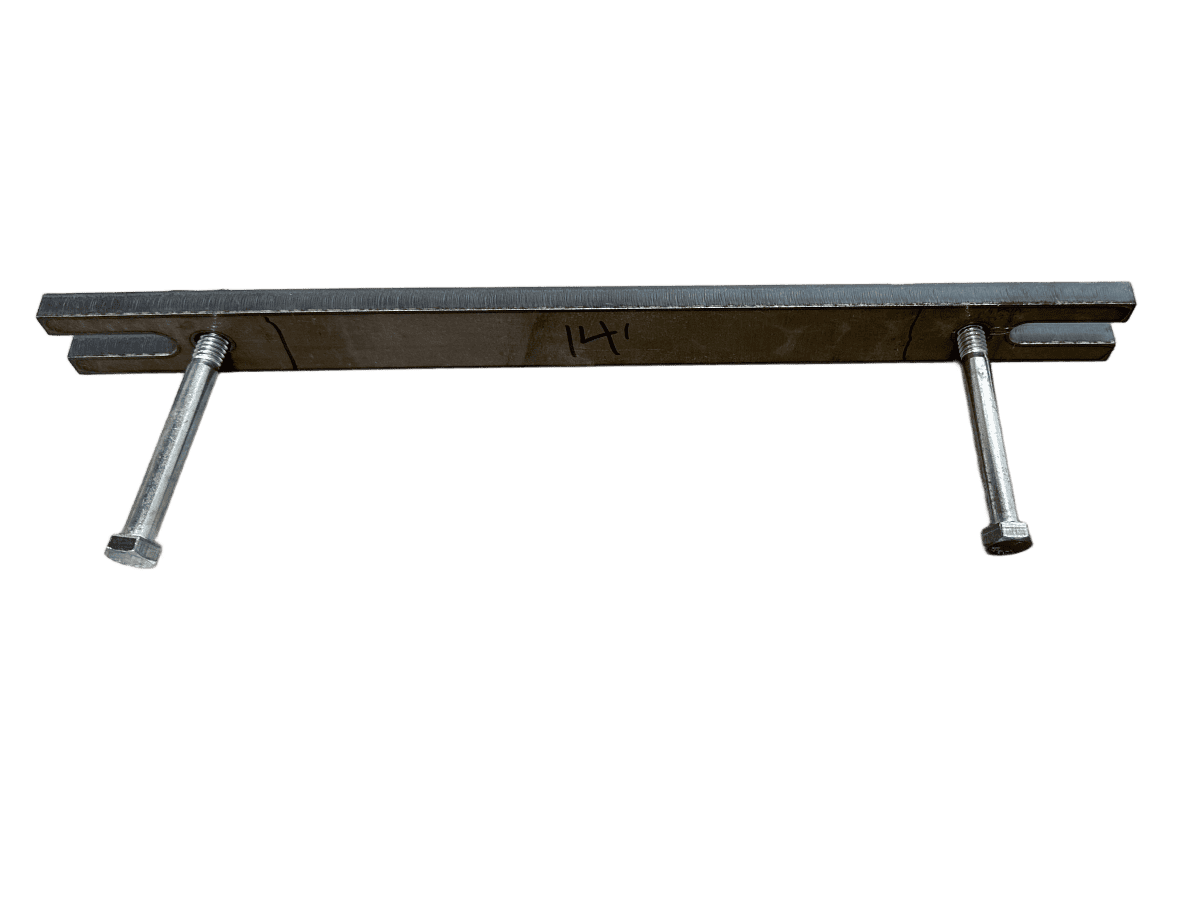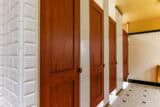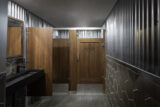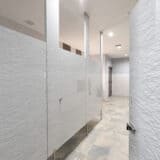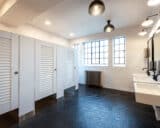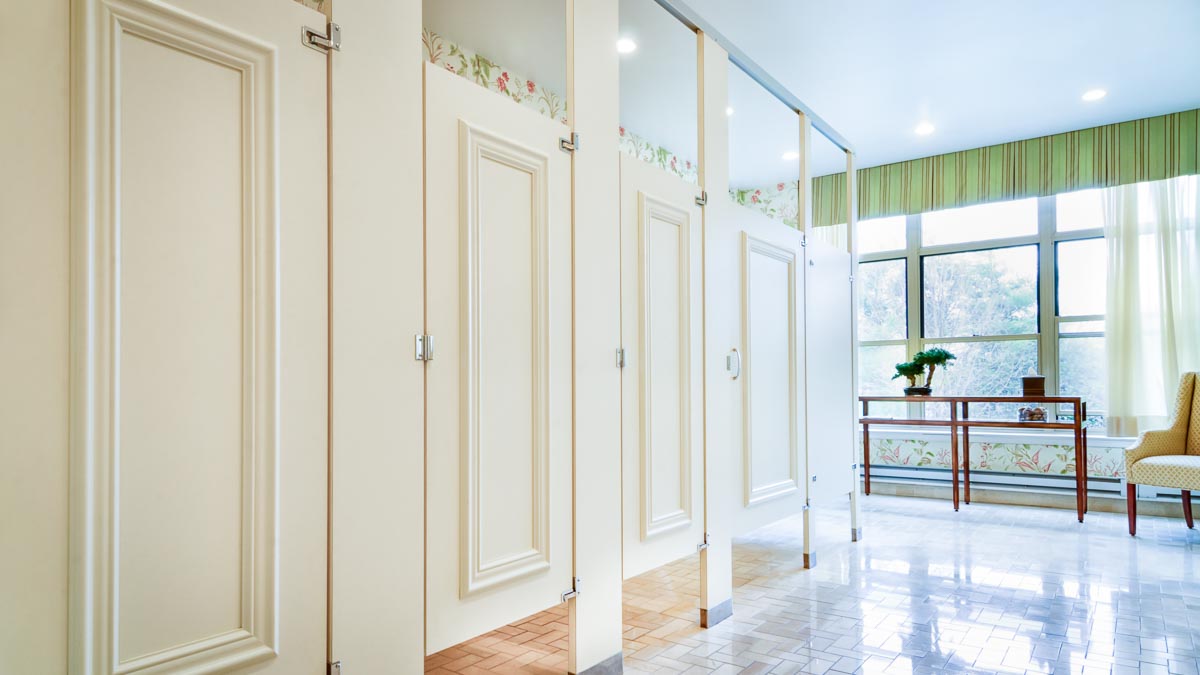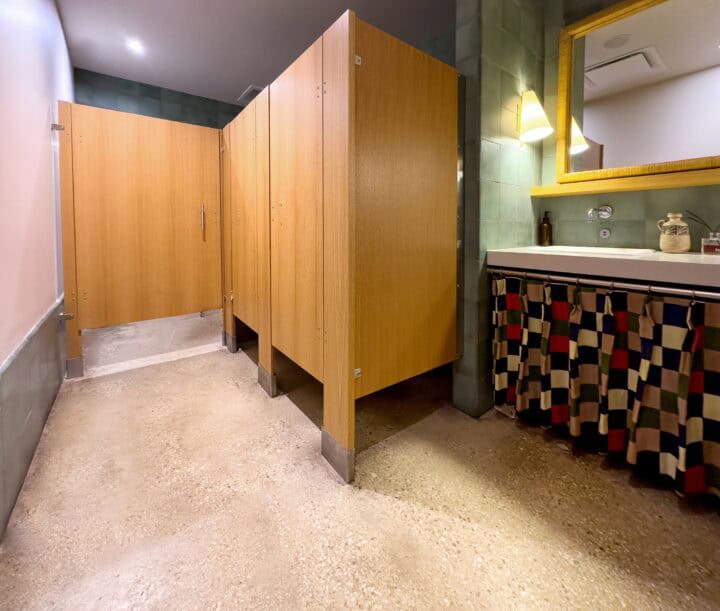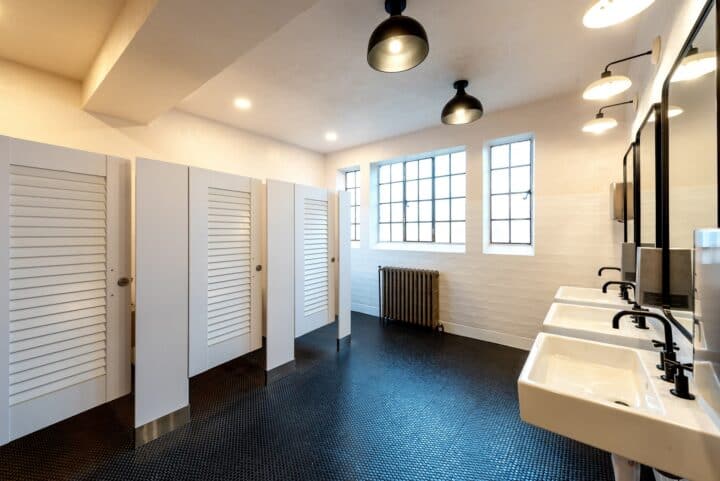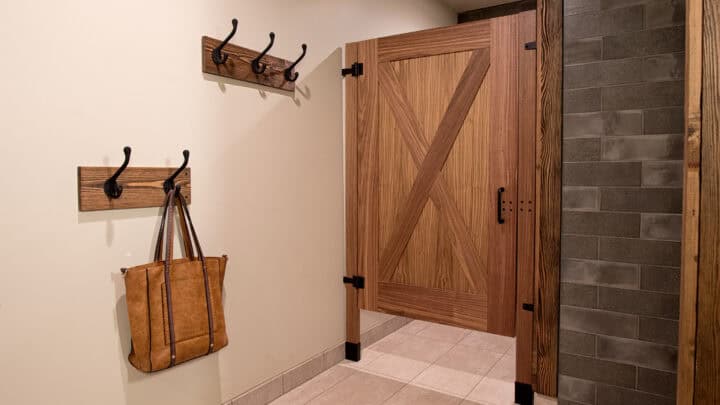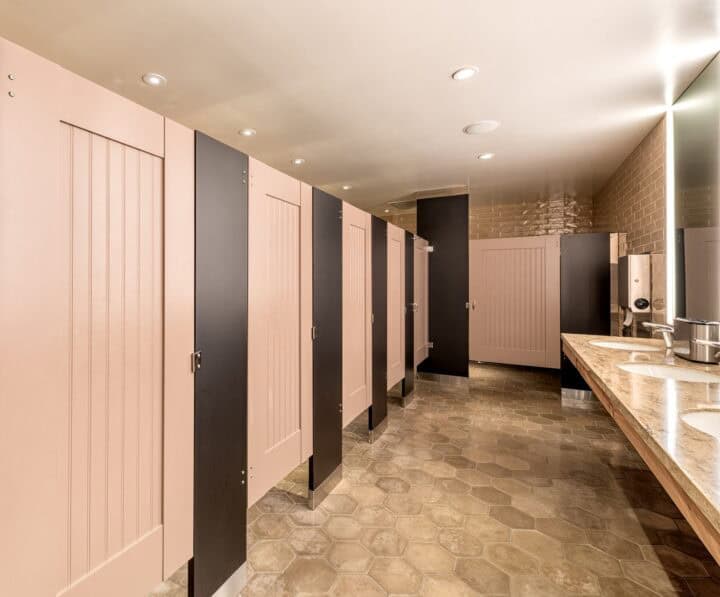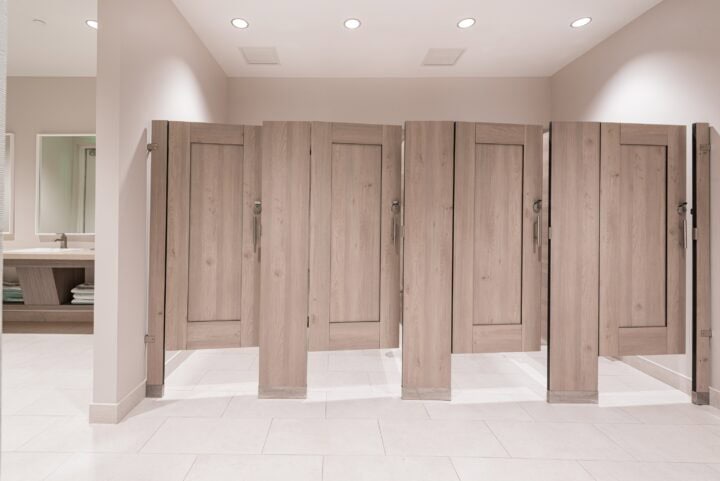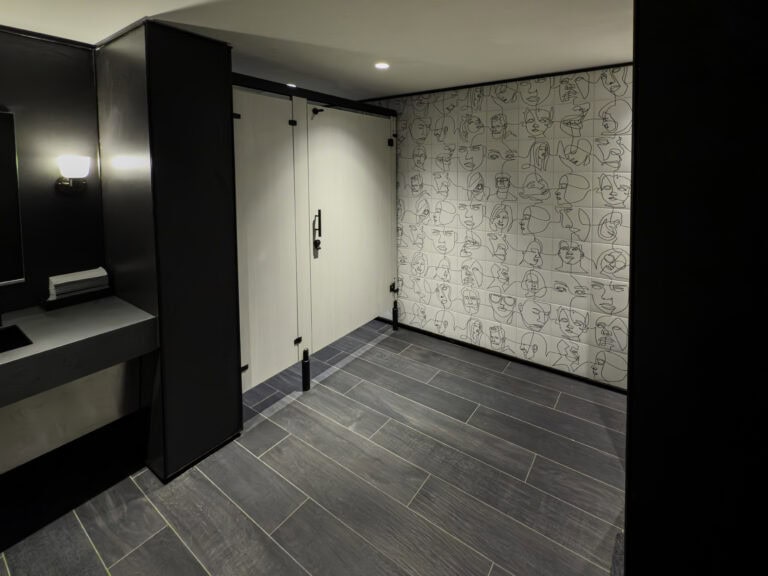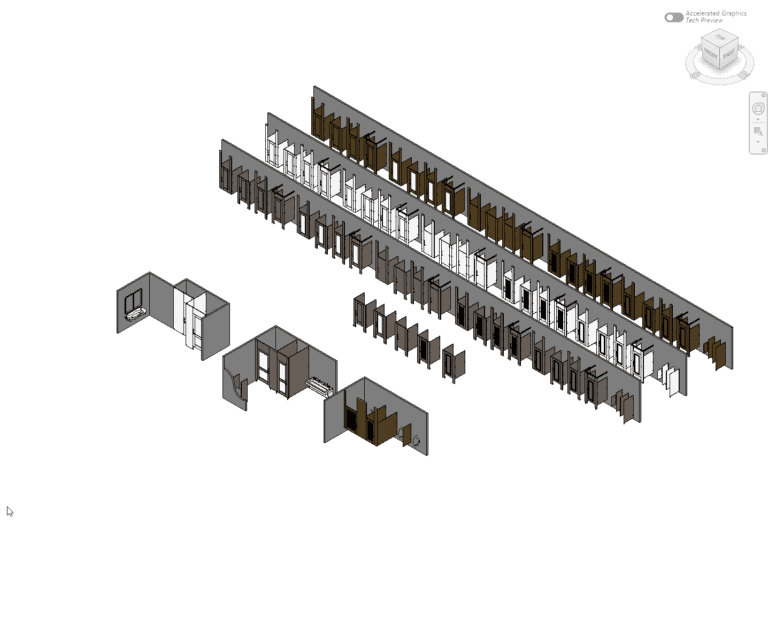Floor Mount Partitions
Design with Floor MountFloor mount partitions offer a sleek, low-profile design and adaptability for modern commercial restrooms with any ceiling configuration.
(None)
Mounting Bar
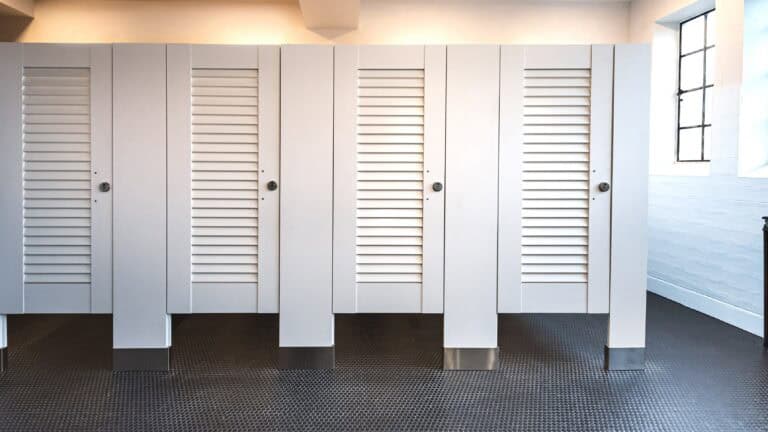
What is Floor Mount?
Floor mount is a mounting method which uses sturdy mounting bars and expansion wedge anchors to affix pilasters to the floor (minimum 4” concrete) without attachments at the ceiling. Shoes conceal the mounting bars. Some floors, such as post-tension or radiant heat, may not be compatible with this mounting style.

Mounting Bar
A bar anchored to the ceiling or floor.
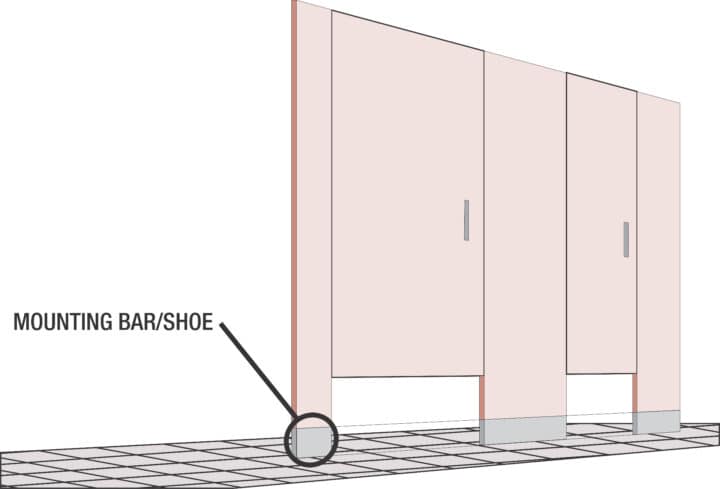
Compatible Materials
Materials
Explore our collection of material options for floor mount partitions. Each choice provides unique benefits to enhance your restroom design.
Door Styles
Compatible Door Styles
Discover the range of door styles available for floor mount partitions. Each option offers a distinct aesthetic, allowing you to transform the look of your space with your selection.

Captured Panel
Stile and rail construction with captured panel inserts and optional midrails.

Door Lite
Stile and rail construction with acrylic or glass translucent inserts.

Engraving
Featuring standard or project-specific patterns cut directly into restroom partition material.

Flat Panel
Flat panel doors in a variety of materials, patterns, and finishes for commercial restroom partitions

Inlay
Doors featuring designs consisting of precisely fitted materials.

Louver
Plantation-style doors with angled slats for aesthetic appeal and airflow in restroom partitions

Molding
Decorative molding trim applied to commercial restroom partition components.
Considerations When Using Floor Mount
Floor Mount offers numerous advantages, but certain features should be evaluated to ensure it meets your project’s requirements.
FeaturesHeight Limitations
The maximum pilaster height for the floor mount style is 70 inches. Pilasters taller than 70 inches require additional support, such as a headrail, to address potential stability issues.
Material Options
This mounting style is only appropriate for compact laminate, plastic laminate, and wood veneer. Engineered stone and solid surface are not suitable due to weight and rigidity issues.
Alcove Configurations
Floor mount alcove partitions typically need a cross or brace pilaster for added stability. These supporting pilasters have minimum width requirements.
Width Restrictions
Floor mount pilasters less than 8″ wide must be anchored to a stable component and cannot have heavy doors swinging from them.
Perpendicular Support
All floor mount pilasters require perpendicular support from a connecting panel, pilaster, or wall for stability.
Possible Vibration
This system is not anchored at the top, so vibration and banging may occur as doors close. Bathroom echos can amplify these effects.
How to Specify Ironwood
Follow our easy three-step process to start using Floor Mount in your design:
The Process- 1
Go to the Configurator
The Ironwwood Configurator will help guide your choices of material, mounting style, door option, hardware, etc. to specify your toilet partitions.
- 2
Generate Your Specification
Once you have made your selections, the configurator will generate a spec and other helpful resources for you.
- 3
Contact Us With Any Questions
Call us at 360-965-6590 or email us at specs@ironwood-mfg.com.
Deeper Dive & Resources
Gain a deeper understanding of Floor Mount by exploring resources and expert insights.
Floor mount partitions require a solid structural foundation for proper installation and long-term stability. Key considerations include:
- A minimum 4″ thick concrete floor to securely fasten the expansion wedge anchor
- This mounting style is not suitable for installation on post-tension concrete floors, radiant heat floors, or non-reinforced wood floors
- Floor scans may be necessary to avoid damaging in-floor utilities
- Always consult with a structural engineer if you have concerns about floor suitability
Mounting bars are the primary hardware used to connect floor mount pilasters to the floor. They play a crucial role in the stability and installation of the partition system.
The mounting bar width matches the pilaster’s thickness. For example, a 1.25″ thick pilaster would use a 1.25″ wide mounting bar.
It is preferable to use pilasters at least 8″ wide in floor mount configurations, even if it means sacrificing some aesthetic preferences.
Pilasters less than 6″ wide use mounting bars with a single notch, one connecting bolt, and a 0.25″ diameter hole for a screw to help hold the bar stable. These narrow pilasters require a perpendicular component or wall for bracing on the non-bolt side.
Pilasters 6″ wide and wider use mounting bars with notches on either end and two connecting bolts. This dual-bolt configuration provides increased stability.

By carefully considering these factors related to mounting bars and pilaster width, designers and installers can ensure the proper stability and functionality of floor mount partition systems.
Floor mount partitions offer unique design opportunities. For example, the opportunity to create an open, airy feel in the restroom due to the gap between the top of the partition and the ceiling.
This mounting style is compatible with various door and panel options, allowing customized looks.
Suitable materials for this mounting style include wood veneer, plastic laminate, and compact laminate. Note that solid surface, and engineered stone are not compatible with this mounting style.
This mounting style has a low-profile aesthetic ideal for spaces with high or decorative ceilings.
For stability reasons, the maximum partition height is 70″ AFF without additional support. This limit results in less privacy compared to other full-height partitions. For example, users over 5’10” (178 cm) may be able to see over the top of the partitions. Designers should consider a different mounting style if higher privacy is needed.
Cross pilasters and brace pilasters are additional structural elements used to provide stability in certain floor mount configurations, particularly in inline alcove stalls.
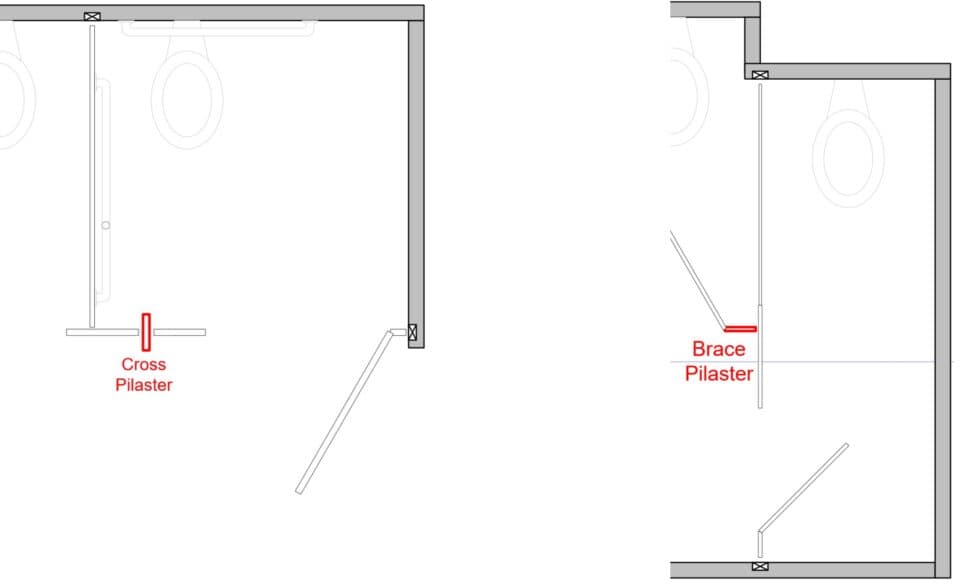
Purpose
These pilasters enhance structural stability in configurations that may lack sufficient support. They are particularly useful in floor mount inline alcove stalls to reduce motion in strike pilasters.
Dimensions
Width: Cross pilasters should be at least 8″ wide. Brace pilasters should be at least 6” wide.
Height: Cross or brace pilaster height should match the height of other pilasters in the restroom.
Thickness: Cross or brace pilaster thickness should match the thickness of other pilasters in the restroom.
Installation Considerations
These pilasters attach to panels and other pilasters using the same bracket type as the rest of the pilasters in the partition.
Where cross pilasters are used, alcove clips may not needed, but additional one-ear and two-ear brackets will be required.
Design Considerations
When introducing a cross pilaster next to an ambulatory stall, care must be taken to ensure the cross pilaster does not interfere with ADA requirements.
If a stall providing a brace pilaster is an ambulatory stall, consider relocating the ambulatory stall to a different location if possible. If relocation is not possible, a cross pilaster might be a better solution to maintain ADA compliance.
By incorporating cross pilasters or brace pilasters into floor mount partition designs, architects and designers can ensure stability and functionality where there might otherwise be excessive movement or insufficient support.
Frequently Asked Questions
Are floor mount partitions ADA compliant?
Floor mount partitions can be designed to meet ADA requirements. Be cautious when using cross pilasters in ADA stalls, as they may cause encroachment issues.
What is the maximum height for floor mount partitions?
Floor mount pilasters should not exceed 70″ in height without additional support, such as a headrail. This height limitation ensures stability and proper functionality of the partition system.
Can floor mount partitions be installed on any type of flooring?
No, floor mount partitions require a minimum 4″ thick concrete floor for secure anchoring. They are not suitable for installation on post-tension concrete, radiant heat floors, or non-reinforced wood floors.
Do floor mount partitions require additional bracing for stability?
In some cases, yes. All floor mount pilasters require perpendicular support from a connecting panel, pilaster, or wall. For alcove configurations or partitions with narrow pilasters, additional cross or brace pilasters may be necessary to ensure stability.
What materials are best suited for floor mount partitions?
Wood veneer, plastic laminate, and compact laminate are recommended materials for floor mount partitions. Solid surface, and engineered stone are not compatible with this mounting style due to their weight and structural characteristics.
Can floor mount partitions be used in alcove configurations?
Yes, but additional cross or brace pilasters may be needed for stability.

If you can’t find the answer you’re looking for, feel free to reach out to us directly and we’ll be happy to assist you!
Featured Floor Mount Bathroom Stalls
GalleryBrowse through examples of floor mount bathroom stalls, highlighting their aesthetic appeal and practical benefits.
Explore Portfolio